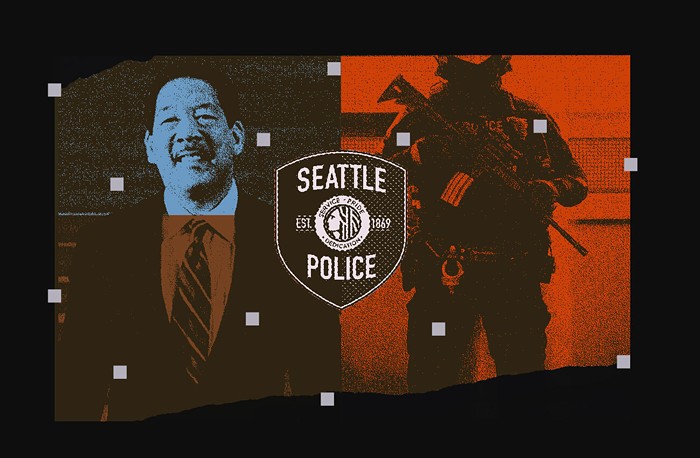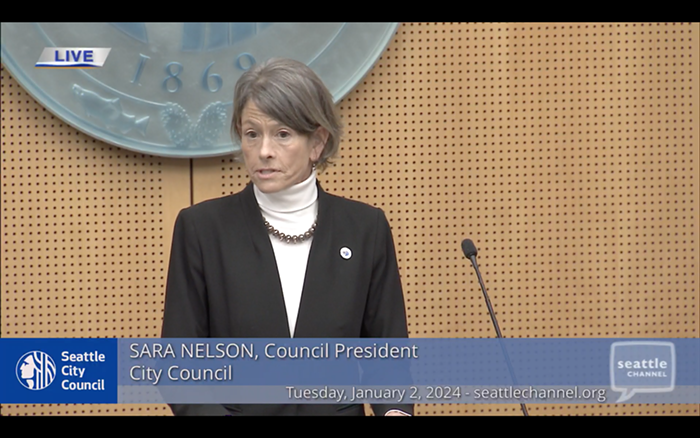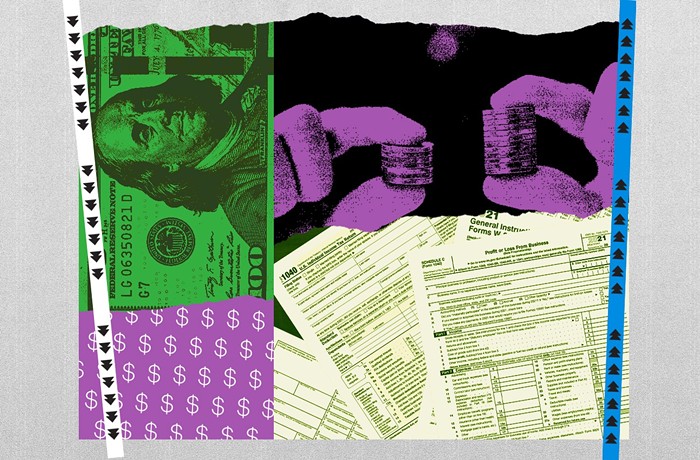Little Saigon is constantly bustling. Chinese and Vietnamese eateries dot this historic area for Asian refugees and immigrants. Markets, cultural centers, and small businesses also line the blocks.
But like many other Seattle neighborhoods, Little Saigon, as well as the surrounding Chinatown-International District, is rapidly changing. Plans to redevelop old buildings threaten to displace long-standing restaurants and community services. Seattle transplants looking for cheap rent are filling tiny studios, driving up costs for people who have lived here for decades.
The latest conflict embroiling Little Saigon involves a plan to open the Navigation Center, a 24/7 homeless shelter, in the heart of the neighborhood. Homeless advocates say the plan is long overdue for a city with 3,000 people living unsheltered. But some Little Saigon residents and business owners are revolting against the shelter, claiming city officials never consulted them in the planning process for the long-promised facility.
"This was shoved down our throats," said Teizi Mersai, operations manager at Lam's Seafood Market, which sits a few blocks away from the Pearl Warren Building, where the shelter is slated to go. His argument comes right out of the NIMBY playbook: A new shelter could invite more crime.
Mayor Ed Murray made the announcement in February that Little Saigon would become home to Seattle's first Navigation Center, which will replace the Operation Nightwatch shelter at 12th Avenue and South Weller Street. Modeled after a center in San Francisco, California, the Navigation Center will stay open at all hours and provide temporary housing for couples, people with pets, and individuals under the influence of drugs or alcohol. The current shelter is open only from 7 p.m. to 7 a.m. and mostly serves homeless men.
Friends of Little Saigon, a neighborhood group opposed to the Navigation Center, responded with letters to the mayor and protests outside City Hall. On April 24, Mayor Murray announced that the project was paused. The community group reported that the hold would last "until a detailed plan is vetted and approved by the community."
Since the plan has already been approved by the city, though, the Navigation Center seems all but inevitable. Reports show that it will be ready to open this summer. Still, Friends of Little Saigon formed a community task force to work with city officials on the project "to advocate for the needs of the [Chinatown-International District] neighborhood and other communities of color facing displacement."
"We're a majority refugee and immigrant community, so we understand the challenge and struggle that communities that are suffering from homelessness [are facing]," said Quynh Pham, an organizer with Friends of Little Saigon. Yet, she added, "it's up to the city to not pick one community over the other."
For planners, locating the Navigation Center near Little Saigon made sense. The neighborhood is just blocks away from the former site of the Jungle, a well-known homeless encampment, and many unsheltered people wander through the neighborhood.
"[The center] can't be in some remote area," said Daniel Malone, executive director for the Downtown Emergency Services Center (DESC), which will operate the shelter.
When asked if the DESC reached out to Little Saigon community members about project plans, Malone said his organization has "not been in the driver's seat" with this part of the conversation but is planning to do some neighborhood outreach.
In an e-mailed statement, Meg Olberding, director of external affairs for the City of Seattle's Human Services Department, said city officials followed typical procedures to choose a site for the Navigation Center. Plentiful unused space at the Pearl Warren Building was one of the biggest factors involved in the city's decision, she said.
Not every Little Saigon resident is upset about the new shelter. "We came here with nothing, but people supported us," said Hanh Tran, 74, a Vietnamese military veteran. "Now it's our turn to give back and support the homeless."
The services provided at the Navigation Center will allow people struggling with homelessness to establish a routine, which is important to help them reintegrate with the rest of the community, said Rang Phan, 86, president of a Vietnamese community group in NewHolly. Visitors should see that homeless people "are in a safe place rather than on the side of the street," he said.
Both men see the plans for the Navigation Center as a "done deal," but they said city officials need to address community concerns without delaying the project further.
“In an area where businesses are managed by moms and pops, and [where] English is a second language, extra effort needs to be made to get the word out,” said Mersai, the seafood shop manager.
In community meetings, Mersai, the seafood shop manager, told city representatives that he wants increased security patrols through the neighborhood or even for the Seattle Police Department to open a satellite station nearby. Ramping up police presence could help prevent Navigation Center residents, particularly those with substance-abuse problems, from being drunk or using drugs in public, he said.
Malone said shelter staff should be "robust enough" and they will be able to help respond to neighborhood concerns. "If someone calls us saying they're concerned, we think that most of the time we will have the ability to send staff out quickly... and see if it's one of our clients," he said.
The city urgently needs to address chronic homelessness, but it can't do so without consulting with the communities that will be impacted by their remedies, said state representative Sharon Tomiko Santos, who represents the 37th Legislative District, which includes Little Saigon and the Chinatown-International District.
"In some ways, by their lack of process, [city officials] put the Chinatown-International District community and Little Saigon into a position of being villains," she said.
Santos said that communication between city officials and the International District and Little Saigon communities is a decades-long problem. Her late husband, Bob Santos, better known by community organizers as "Uncle Bob," fought for years against projects that neighbors believed would harm the area, including the construction of the Kingdome, Safeco Field and CenturyLink Field, and Interstate 5, which divided the community, causing some businesses to shutter.
"The community has had to fight back to retain the right to exist," Santos said. ![]()



















